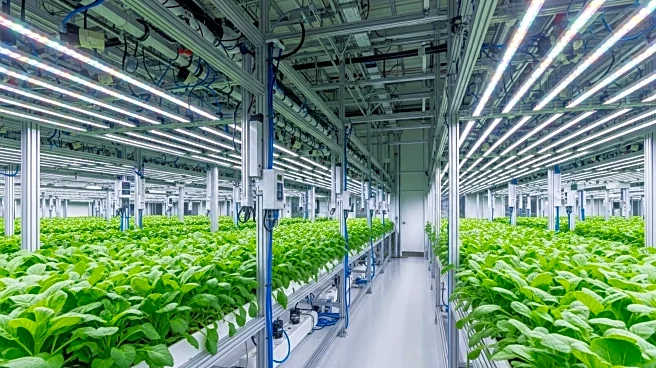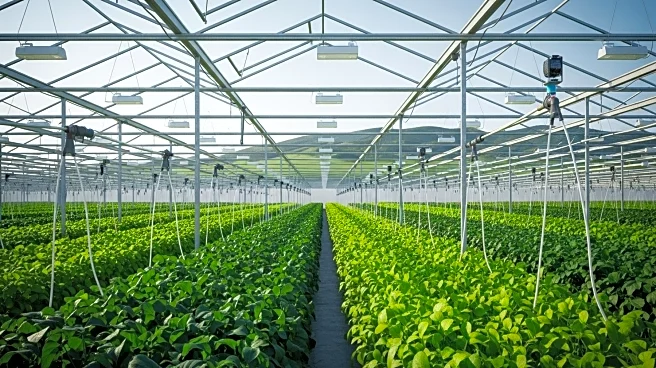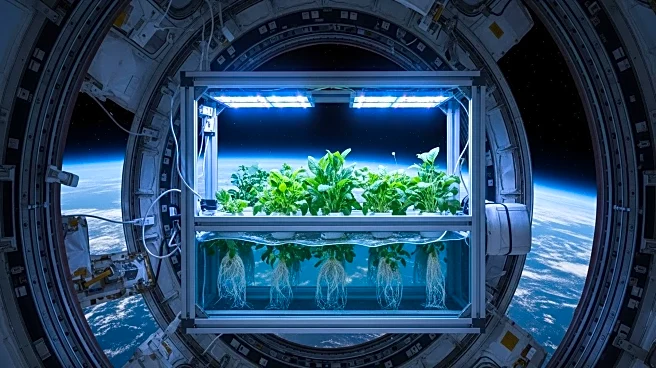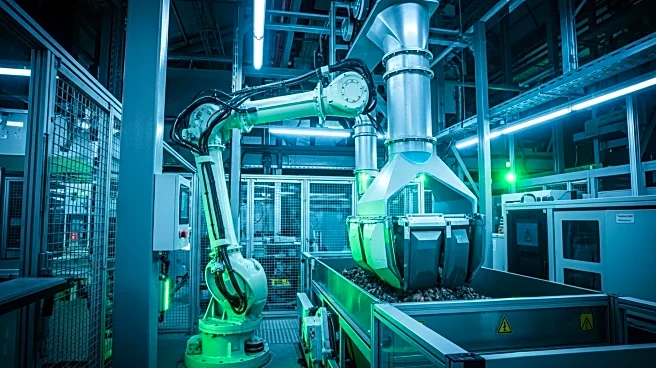What is the story about?
What's Happening?
The vertical farming market in the United States is experiencing significant growth, driven by advancements in smart agriculture technology and an increasing demand for sustainable food supply. Vertical farming involves growing crops in stacked layers, often utilizing hydroponics or aeroponics, to maximize space and resources. Key players in this market include AeroFarms LLC, Plenty Unlimited Inc, Green Spirit Farms LLC, and Bowery Farming Inc. Recent developments include AeroFarms opening a new facility in Virginia, Plenty Unlimited securing substantial funding for expansion, and Bowery Farming partnering with retailers to distribute vertically grown strawberries. The market is projected to grow at a CAGR of 24.6% from 2024 to 2031, fueled by urbanization and food security concerns.
Why It's Important?
The expansion of vertical farming in the U.S. is crucial for addressing food security and sustainability challenges. As urbanization increases and arable land decreases, vertical farming offers a viable solution for producing food efficiently and sustainably. This growth supports the U.S. economy by creating jobs and fostering innovation in agriculture technology. Additionally, vertical farming reduces water usage and supply chain emissions, contributing to environmental conservation. The integration of AI and robotics in farming practices enhances productivity, positioning the U.S. as a leader in sustainable agriculture.
What's Next?
The vertical farming industry is expected to continue its expansion, with further investments and technological advancements. Companies are likely to explore new partnerships and distribution channels to increase market reach. The focus will be on overcoming challenges such as high setup costs and energy consumption, while leveraging opportunities in AI and IoT integration. As the industry grows, it may influence policy decisions related to sustainable agriculture and urban planning.
Beyond the Headlines
Vertical farming represents a shift towards more sustainable and efficient agricultural practices, potentially transforming the food production landscape. It raises ethical considerations about land use and resource allocation, as well as cultural shifts in food consumption patterns. The industry's growth may also impact traditional farming communities and necessitate new skills and training for workers.
AI Generated Content
Do you find this article useful?














